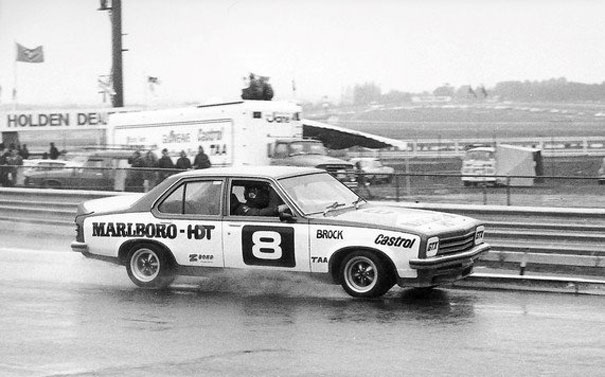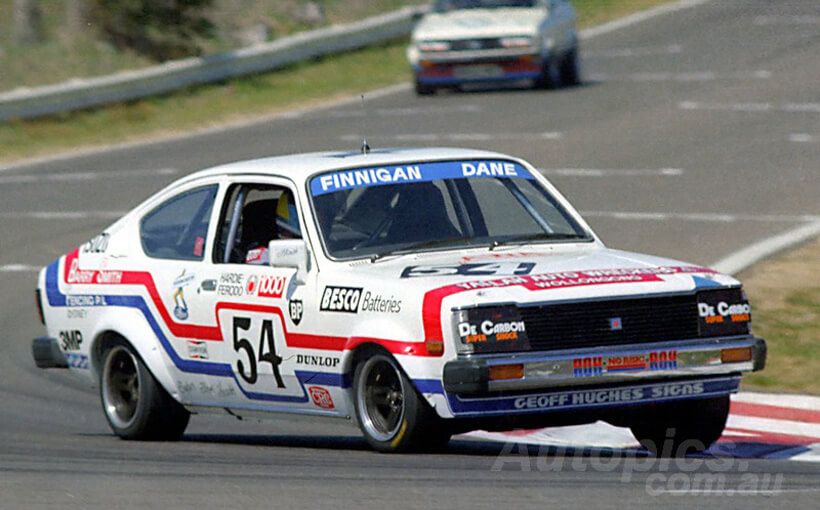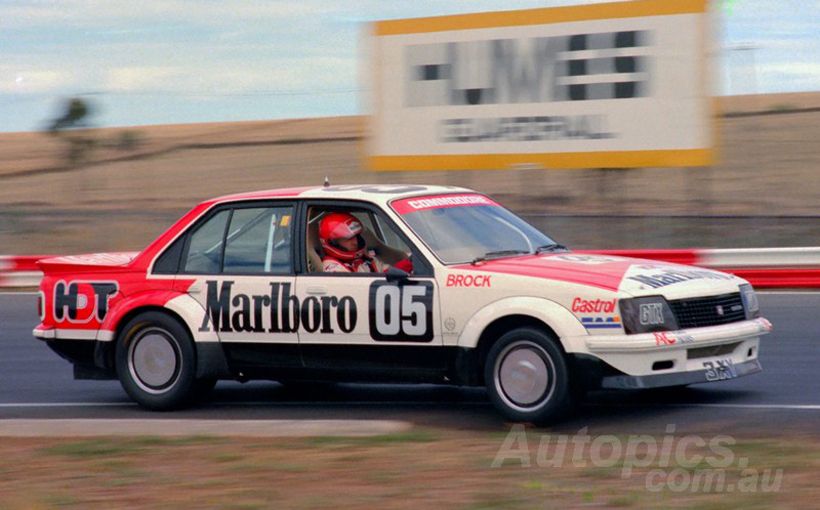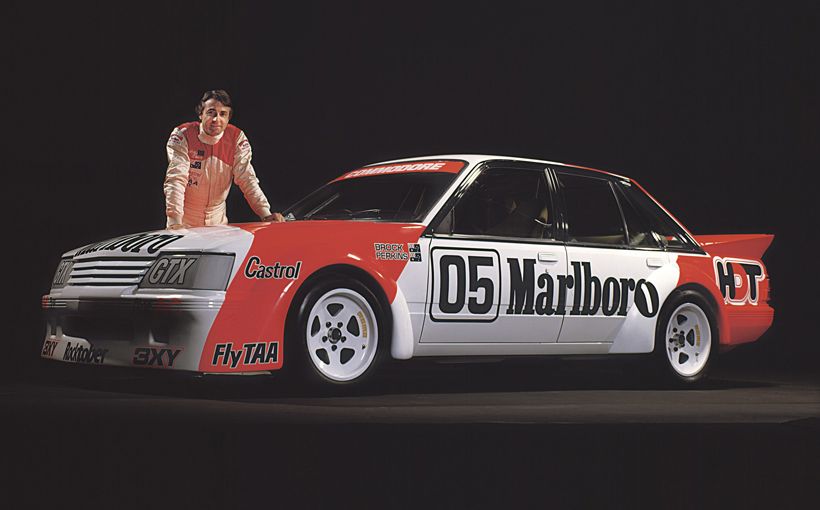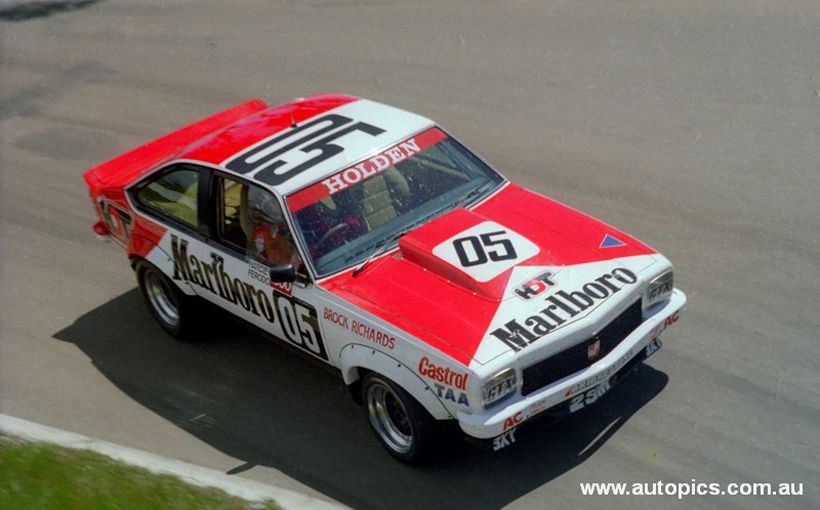Holden LH Torana SL/R 5000: The Accidental Race Car

The SL/R 5000 was the ‘top shelf’ model in Holden’s all new LH Torana line-up when it was launched with great fanfare in March 1974.
With its large front and rear spoilers, prominent decals, side stripes and loud colours, there was no doubt Holden’s first V8-powered Torana was destined for the race track.
It certainly carried the weight of expectation, given the remarkable success of its smaller and lighter predecessor, the six cylinder-powered LJ GTR XU-1, which was still highly competitive at the time.
Indeed, when the LH range was launched, the 1974 Australian Touring Car Championship (ATCC) was already in full swing with Peter Brock winning the first and second rounds in the Holden Dealer Team’s highly developed XU-1. The LJ Torana was in its third season of competition.
Now armed with a more powerful 5.0 litre V8 engine, many rightfully expected that the XU-1’s successor would reach new heights in its dominance of Australian touring car racing.
To achieve that lofty goal, GM-H was already hard at work on a factory-developed competition package for the SL/R 5000 which would become available mid-year in time for the all-important Bathurst 1000. Known as option code ‘L34’ it was designed to address known weaknesses in engine, suspension and brakes.
Therefore, the standard SL/R 5000 was never intended to go racing. The fact that it did for several months prior to the arrival of the L34 was purely to meet the commercial obligations of competing tobacco giants, which had just taken a major stake in the sport.

Gricey and the ‘Craven Mild’ SL/R 5000
Multiple Bathurst 1000 winner Allan Grice was the first driver to race the Torana SL/R 5000 and in doing so also became the first man to drive a Torana V8 in the ATCC.
Not that it was ever Gricey’s intention (nor Holden’s) to race the car in that form. He was left with no choice after securing a sponsorship deal with WD & HO Wills through its Craven Mild cigarette brand that came together much quicker than he had expected.
In early 1974, Grice had put a proposal to the tobacco giant to create a Craven Mild Racing Team built around a “Torana V8” touring car for Grice and a new Monaro sports sedan owned by Laurie O’Neil that Pete Geoghegan was going to drive.
When Grice proposed running a “Torana V8” he was of course referring to the competition-bred L34 version due to appear mid-year, allowing for the usual time such commercial negotiations can take.
However, when WD & HO Wills agreed to the deal much sooner than expected, Grice was left with no choice but blood the SL/R 5000 as early as April 1974 – the same month the car was launched.
As far as his new sponsor was concerned, this decision was marketing gold due to the huge amount of publicity created by Grice and the new Craven Mild Racing Team being the first to race the new Torana V8.

For his race team mechanics, though, the new SL/R 5000 took a giant step backwards from its six cylinder predecessor.
It was not only longer, wider and heavier than the XU-1, but its much squarer and more boxy shape was less than ideal in terms of aerodynamics which would reduce the advantage of having the larger and more powerful V8.
The SL/R 5000’s engine was the same L31 5.0 litre (or 5000cc) V8 fitted to other mainstream models in the Holden range, featuring a 750cfm four-barrel Rochester Quadrajet carburettor, 9:1 compression, 179kW (240bhp) and 427Nm (315 ft/lbs) of torque.
Of particular concern for racing was the engine’s relatively small sump which held less than 3.5 litres of oil. With the high speeds and greatly increased g forces experienced in motor sport, the potential for engine failure was very high.
The mechanical compromises continued behind the engine, too, with Holden electing to stick with the ‘Aussie’ M21 close-ratio four-speed manual gearbox. Its gear strength under racing conditions was also considered marginal, given the increased torque of its V8 engine.
Drivetrain weaknesses continued to the live rear axle assembly, with Holden’s venerable Banjo-type differential little changed from the same spindly unit fitted to production line Holdens stretching back to the EH model of the early 1960s.
The SL/R 5000 at least featured slightly stronger fine-spline rear axles than other models in the LH range (23-spline vs 10-spline) but they were still considered too weak for racing applications given the potential for sticky race tyres and V8 power to snap an axle.
With its relatively small 5.5 x 13-inch diameter wheels, the SL/R 5000 also did not provide sufficient room under its mudguards nor enough clearance around its wheel arches to fit the taller wheels and wider tyres allowed under the Group C rules, which permitted rims up to 10 inches wide.
And on top of all that, the standard tiny front brakes were clearly inadequate for racing, being solid 250mm (10-inch) diameter cast iron rotors clamped by single-piston floating calipers with 228mm (9.0 inch) diameter drums on the back.
With the large front spoiler restricting air flow under the car and with no form of cold air ducting allowed, expectations were that the brakes would very quickly overheat.

Fast but fragile – as expected
On Sunday April 14, 1974, Allan Grice made local motor sport history by giving The General’s new Holden V8 its first race track appearance when he ran some high-speed demonstration laps at Sydney’s Amaroo Park Raceway.
The SL/R 5000, which had just been launched during the same month, was so new that its homologation papers were still awaiting the official rubber stamp from the Confederation of Australian Motor Sport (CAMS).
The new Torana’s competition debut came two weeks later at Sydney’s Oran Park Raceway which was hosting round five of the ATCC.
The appearance of Holden’s first production version of a Torana V8 created enormous interest and Grice didn’t disappoint the Holden fans, qualifying an impressive fourth fastest in a car that had enjoyed minimal preparation.
He ran as high as second place in the race, only to be forced into the pits after running out of brakes caused by extreme temperatures in the small non-ventilated front discs.
To try and alleviate the severe lack of cooling, his team had removed the front spoiler prior to the race to try and get more fresh air onto the red hot front discs, but it was of little help.

Marlboro-HDT joins the battle
At the next round of the ATCC held at Queensland’s Surfers Paradise Raceway in May, Grice was joined by another SL/R 5000 Torana driven by Peter Brock and entered by the factory-backed Holden Dealer Team (HDT).
To boost direct funding of the team’s activities, in 1974 HDT had also signed up a new heavyweight corporate sponsor in tobacco giant Phillip Morris, through its Marlboro cigarette brand. The team was re-branded Marlboro-HDT.
Like Grice, HDT boss Harry Firth had been left with no choice but to run an SL/R 5000 in response to pressure from his new sponsor as Marlboro also competed head-on with Craven Mild at a retail level.
The problem was that although Brock was leading the ATCC in his Torana XU-1 and well on track to claim his first ATCC title, Grice had been stealing most of the headlines and publicity along the way with his new Torana V8! The Marlboro men were not happy and had demanded some quick action from HDT.
Like Grice’s car, the Marlboro-HDT SL/R 5000 would have a competitive life of just a few months.
Even so, given the commonality of so many parts in the SL/R 5000 and L34 - particularly the marginal gearbox and rear axles - those few months would at least provide some useful track testing and evaluation.

With its powerful V8 engine and Brock at the helm, getting competitive lap times from the new SL/R 5000 was not going to be a problem. HDT’s primary focus was on reliability, as Firth was acutely aware of how fragile the standard car was in racing conditions.
Like Grice, HDT fitted the XU-1’s race tyres and lightweight 13-inch Globe alloy wheels to ease strain on the gearbox and rear axles. They also mounted the oil pickup as low as possible in the sump and filled it with more oil than recommended to try and safeguard against the much feared oil surge.
Grice again qualified fourth fastest at Surfers and was holding down fourth place in the race until oil surge generated by the circuit’s long, sweeping turns and sustained high g force loadings caused a big end bearing to run dry and seize, resulting in a catastrophic engine failure.
The Craven Mild Torana rolled slowly into pit lane and out of the race, leaving a long trail of hot oil behind it. The cause? A huge hole in the side of the 308’s cylinder block with a broken con-rod hanging out of it!
By comparison, Brock had a dream debut in the HDT SL/R 5000, comfortably claiming pole position in qualifying before cruising to an apparent trouble-free victory against thin opposition which all but wrapped up his first of three ATCC titles.
Grice had to miss the final ATCC round held three weeks later at Adelaide International Raceway, leaving Brock and HDT to claim another easy flag-to-flag victory in the SL/R 5000.

Firth heaped praise on Brock’s ability to produce consistently fast lap times while being very gentle on the machinery. His smoothness through the corners had helped to minimise oil surge in the engine and produced two emphatic wins from two starts, which pleased sponsor Marlboro. And no doubt, relieved Holden.
In the five months between April 1974 and the L34’s debut in the opening round of the Manufacturers Championship in August 1974, the Marlboro-HDT and Craven Mild Racing Team SL/R 5000s also competed in several non-championship events at different interstate tracks.
Again, it was all about getting maximum exposure for their new tobacco sponsors. Which was the only reason why the SL/R 5000 went racing at all.

